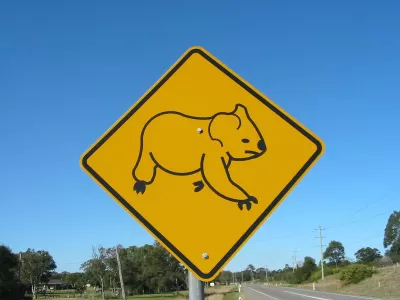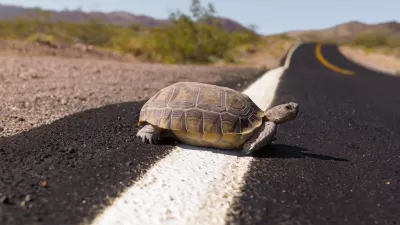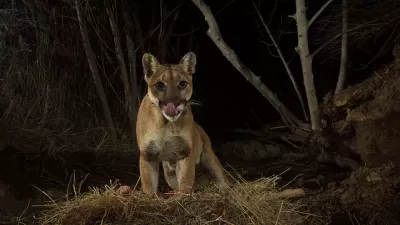When urban areas intrude into former wildlife habitat areas, animals face challenges moving across busy roadways. In Australia, designers have worked to create passages for koalas to avoid the dangers of speeding motorists.

Australia's koala population is under threat as sprawl in New South Wales and Queensland is leading to what has been described as a "a genuinely apocalyptic scenario" that could drive the local koala population into extinction. Darryl Jones of The Conversation (as reported in Phys.org) reports that koalas have adapted to urban intrusion less successfully than other types of wildlife, with one of the major causes of death being collisions with cars. In response, designers have looked at various methods to keep koalas from crossing roadways while still allowing a wide range of movement that was also important to the health of the koala population. One solution has been to adapt box culverts typically found under roadways to allow for passage of smaller animals. To create a safe passage that avoided the water that typically runs through the culverts, designers built a wide ledge that allowed smaller animals to easily walk through.
By attaching a wide ledge to the side of the culvert leading from one side of the road to the other, animals could potentially traverse the danger zone above.
This possibility proved unexpectedly fruitful. Within only a few weeks, a remarkable suite of fauna including echidnas, wallabies, possums and goannas had found and used the ledges. But most exciting of all were the numerous koalas captured on the monitoring cameras and tracked by various technologies. These otherwise arboreal marsupials, whose main proclivity is climbing trees or walking – quickly – to the next tree, had somehow discovered a way of avoiding the great risks of the traffic above by travelling below on an artificial ledge over water in a dark tunnel!
Jones reports that authorities are also looking at changing the behavior of drivers, who have shown little response to wildlife signs placed along the roadway. Electronic signs that report the speed of drivers and changes in roadway paving color have been suggested as possible methods to get drivers to slow down in wildlife crossing areas.
FULL STORY: Saving koalas through urban design

Manufactured Crisis: Losing the Nation’s Largest Source of Unsubsidized Affordable Housing
Manufactured housing communities have long been an affordable housing option for millions of people living in the U.S., but that affordability is disappearing rapidly. How did we get here?

Americans May Be Stuck — But Why?
Americans are moving a lot less than they once did, and that is a problem. While Yoni Applebaum, in his highly-publicized article Stuck, gets the reasons badly wrong, it's still important to ask: why are we moving so much less than before?

Research Shows More Roads = More Driving
A national study shows, once again, that increasing road supply induces additional vehicle travel, particularly over the long run.

Using Old Oil and Gas Wells for Green Energy Storage
Penn State researchers have found that repurposing abandoned oil and gas wells for geothermal-assisted compressed-air energy storage can boost efficiency, reduce environmental risks, and support clean energy and job transitions.

How Protecting Kauaʻi’s Forests Safeguards Fresh Water
A University of Hawaiʻi study shows that protecting Kauaʻi’s native forests from invasive species significantly boosts groundwater recharge, making it a cost-effective strategy to secure fresh water and enhance climate resilience.

Gary, Indiana to Expand Transit Service, Bike Share
The city plans to launch a bike share system in April and expand service on its bus routes.
Urban Design for Planners 1: Software Tools
This six-course series explores essential urban design concepts using open source software and equips planners with the tools they need to participate fully in the urban design process.
Planning for Universal Design
Learn the tools for implementing Universal Design in planning regulations.
City of Moreno Valley
Institute for Housing and Urban Development Studies (IHS)
City of Grandview
Harvard GSD Executive Education
NYU Wagner Graduate School of Public Service
City of Cambridge, Maryland
Newport County Development Council: Connect Greater Newport





























